
Living with kidney disease requires careful attention to diet, making it essential to find meals that are both nutritious and delicious. In this article, I will share the ten best renal diet recipes that can help manage kidney health while satisfying your taste buds. These recipes are designed to meet dietary restrictions and provide essential nutrients without sacrificing flavor.
Cooking does not have to be complicated, especially when it comes to following a renal diet. I believe that with the right recipes, meal preparation can be enjoyable and fulfilling. Each recipe I will present aims to simplify your cooking experience while ensuring it aligns with your dietary needs.
1. Grilled Lemon Herb Chicken
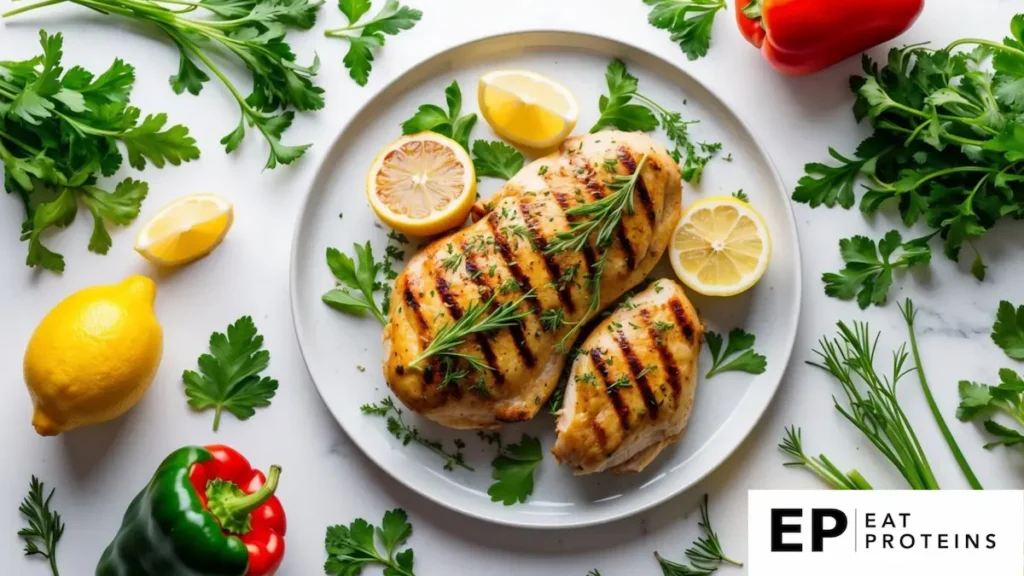
Grilled Lemon Herb Chicken is a simple and flavorful dish that’s great for a renal diet. It’s low in potassium and sodium, making it a healthy choice.
I find this recipe easy to make. It only requires a few ingredients and minimal preparation time.
Here are the steps to prepare it:
- Gather Ingredients: You’ll need chicken breasts, lemon juice, olive oil, garlic, thyme, and pepper.
- Marinate: Combine lemon juice, olive oil, minced garlic, thyme, and pepper in a bowl. Add the chicken and let it marinate for at least 30 minutes.
- Preheat Grill: Heat the grill to medium-high.
- Cook Chicken: Place marinated chicken on the grill. Cook for about 6-7 minutes on each side until it reaches an internal temperature of 165°F.
- Serve: Let the chicken rest for a few minutes before slicing. Enjoy it plain or on top of a salad.
This dish is not only tasty but also fits well into a healthy eating plan for kidney health.
2. Baked Cod with Garlic and Herbs

Baked cod with garlic and herbs is a simple and healthy dish. Cod is a lean fish that is low in potassium, making it a great choice for a renal diet. The use of garlic and herbs adds flavor without extra salt.
Making this recipe is easy and quick. I enjoy preparing it for a weeknight dinner. Here are the steps:
- Preheat the oven to 400°F (200°C).
- Line a baking dish with parchment paper.
- Place two cod fillets in the dish.
- Drizzle with 2 tablespoons of olive oil.
- Sprinkle with minced garlic (about 3 cloves).
- Add dried herbs like thyme and parsley, about 1 teaspoon each.
- Season with black pepper to taste.
- Bake for 15-20 minutes until the fish flakes easily with a fork.
This recipe takes about 30 minutes from start to finish. I often serve it with steamed vegetables for a balanced meal. Enjoying baked cod with garlic and herbs is both satisfying and healthy.
3. Quinoa and Veggie Stir Fry
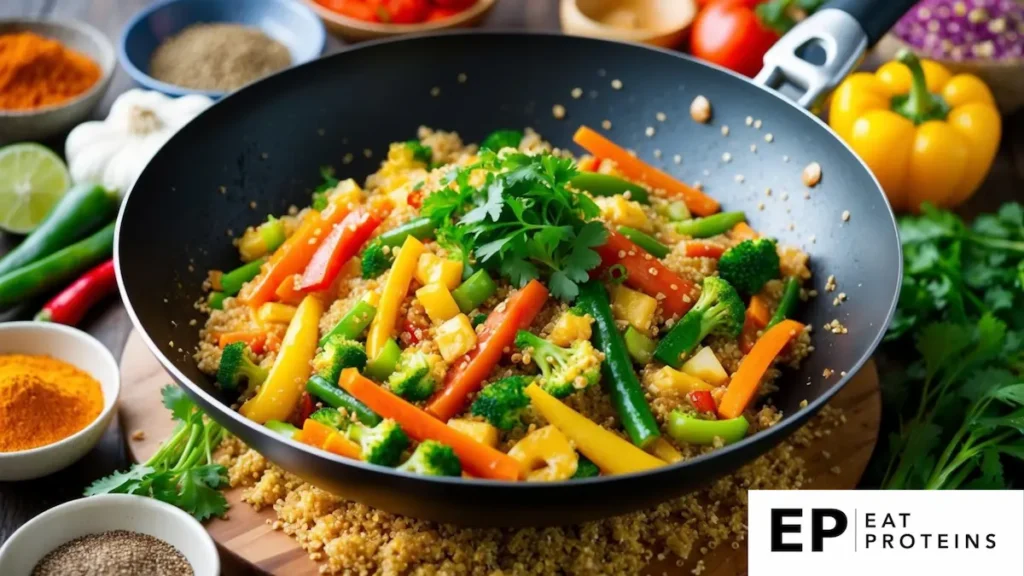
Quinoa is a whole grain that is high in protein and fiber. It is a great alternative to rice. I enjoy using it because it is nutritious and easy to cook.
To make quinoa and veggie stir fry, follow these steps:
- Rinse 1 cup of quinoa under cold water.
- Cook it in 2 cups of vegetable broth for about 15 minutes or until the water is absorbed.
- While the quinoa cooks, chop 2 cups of mixed vegetables like bell peppers, broccoli, and carrots.
- Heat 1 tablespoon of olive oil in a pan over medium heat.
- Add the chopped vegetables and stir-fry for 5-7 minutes until they are tender.
- Once the quinoa is done, add it to the pan with veggies.
- Season with salt, pepper, and a splash of soy sauce to taste.
This dish is quick to make and can be ready in about 30 minutes. It provides delicious flavors and a healthy boost to my renal diet.
4. Low-Sodium Minestrone Soup
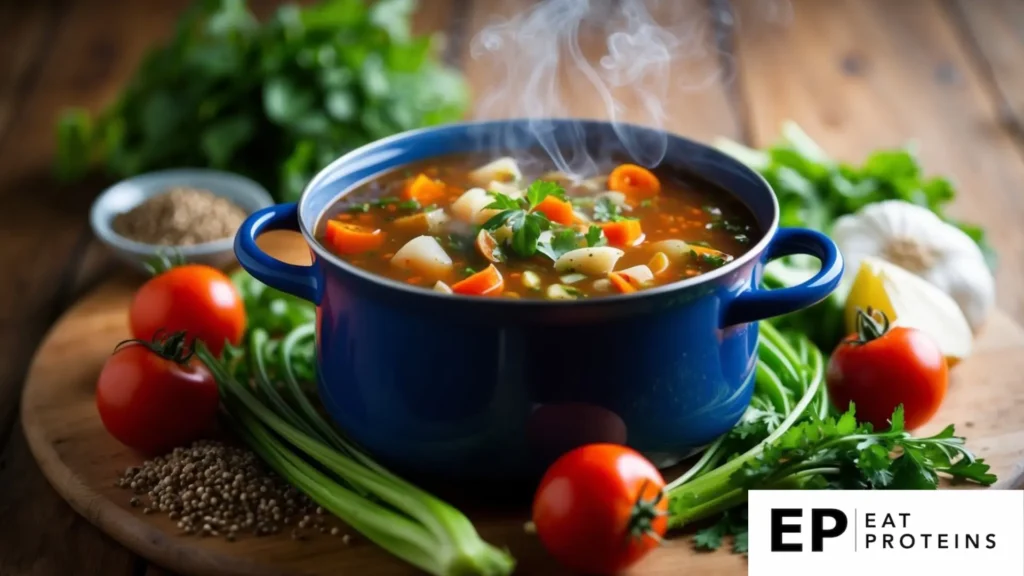
I enjoy making Low-Sodium Minestrone Soup because it’s packed with nutrients and flavor without the extra salt. This soup is great for anyone on a renal diet.
Making this soup is easy and quick. It typically takes about 30 minutes from start to finish. You can use fresh vegetables like carrots, celery, and zucchini. These add great taste and are healthy options.
Here are the steps:
- Chop the vegetables: I start by chopping one carrot, one celery stalk, and one zucchini.
- Sauté: In a pot, I heat a teaspoon of olive oil and sauté the vegetables for 5 minutes.
- Add broth: Then, I pour in 4 cups of low-sodium vegetable broth.
- Include beans and pasta: I add 1 cup of canned low-sodium kidney beans and ½ cup of small pasta. I let it cook for about 10-15 minutes.
- Season: Finally, I season with herbs like basil and oregano.
This Low-Sodium Minestrone Soup is comforting, nutritious, and simple to prepare. It offers a delicious way to enjoy healthy cooking.
5. Cucumber and Dill Salad
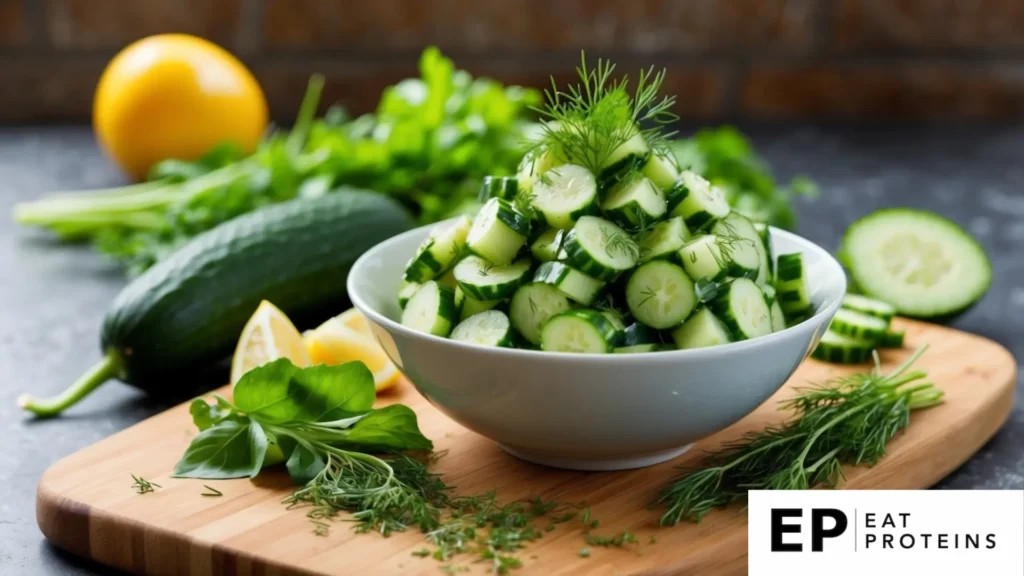
Cucumber and Dill Salad is a refreshing dish that fits well into a renal diet. It is light, easy to make, and uses simple ingredients that are kidney-friendly.
To prepare this salad, I need just a few steps. First, I gather the ingredients: fresh cucumbers, fresh dill, a bit of olive oil, and vinegar.
- I wash and peel 2 medium cucumbers.
- Then, I slice them into thin rounds.
- Next, I chop about 2 tablespoons of fresh dill.
- In a bowl, I mix the cucumbers and dill together.
- I drizzle 1 tablespoon of olive oil and 1 tablespoon of vinegar over the mixture.
- Finally, I toss everything gently to combine.
This salad can be served right away or chilled for a bit. It’s a great side dish or a light meal option. The flavors of cucumber and dill create a fresh taste that is both satisfying and healthy.
6. Blueberry Banana Smoothie
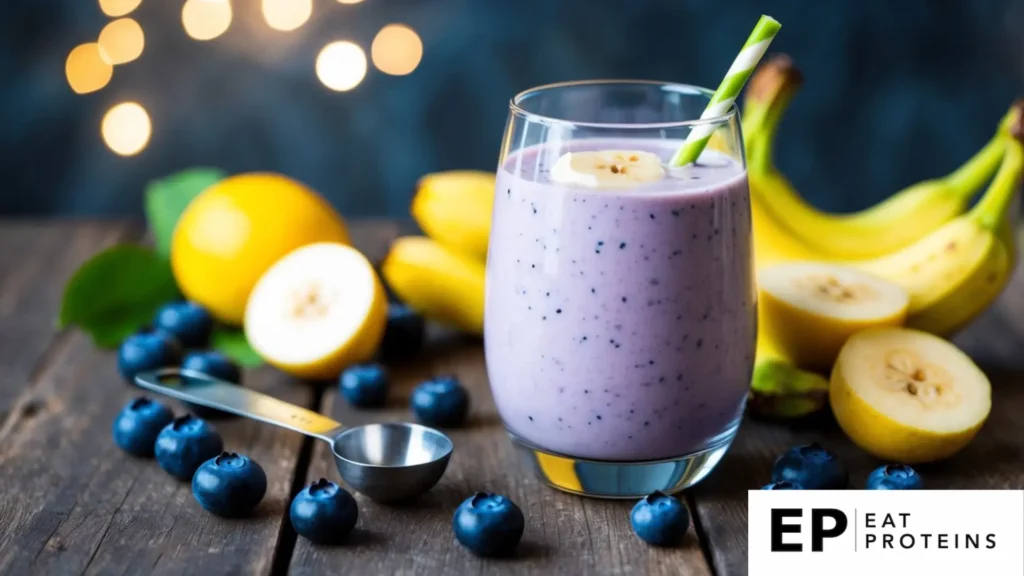
The Blueberry Banana Smoothie is a nutritious choice for those on a renal diet. Blueberries are low in potassium and high in antioxidants, while bananas offer a natural sweetness and some essential vitamins.
Making this smoothie is simple and quick. Here’s how I do it in a few steps:
- Gather your ingredients: 1 banana, 1 cup of blueberries (fresh or frozen), and 1 cup of water or almond milk.
- Peel the banana and chop it into smaller pieces.
- Combine the banana, blueberries, and water or almond milk in a blender.
- Blend until smooth, about 30 seconds.
- Pour the smoothie into a glass and enjoy!
This recipe is easy to adjust. I can add ice cubes for a colder drink or a handful of spinach for extra nutrients. This smoothie is a great way to stay healthy while keeping the renal diet in mind.
7. Red Bell Pepper and Chickpea Salad

Red bell pepper and chickpea salad is a nutritious option for those on a renal diet. It’s packed with vitamins and fiber. This salad is quick to make and provides a fresh taste.
To prepare, I gather these ingredients: 1 cup of canned chickpeas, 1 diced red bell pepper, ½ cup of chopped cucumber, and ¼ cup of red onion. For dressing, I use 2 tablespoons of olive oil and 1 tablespoon of lemon juice.
Making the salad is simple. First, I rinse the chickpeas under cold water. Next, I mix them with the red bell pepper, cucumber, and onion in a bowl.
Then, I whisk together the olive oil and lemon juice in a small bowl. After that, I pour the dressing over the salad and toss everything gently.
This dish can be served immediately or chilled for a few minutes. It is delicious and healthy, making it a great choice for a quick meal or side dish. The combination of flavors is not only enjoyable but also supports my dietary needs.
8. Herb-Crusted Salmon
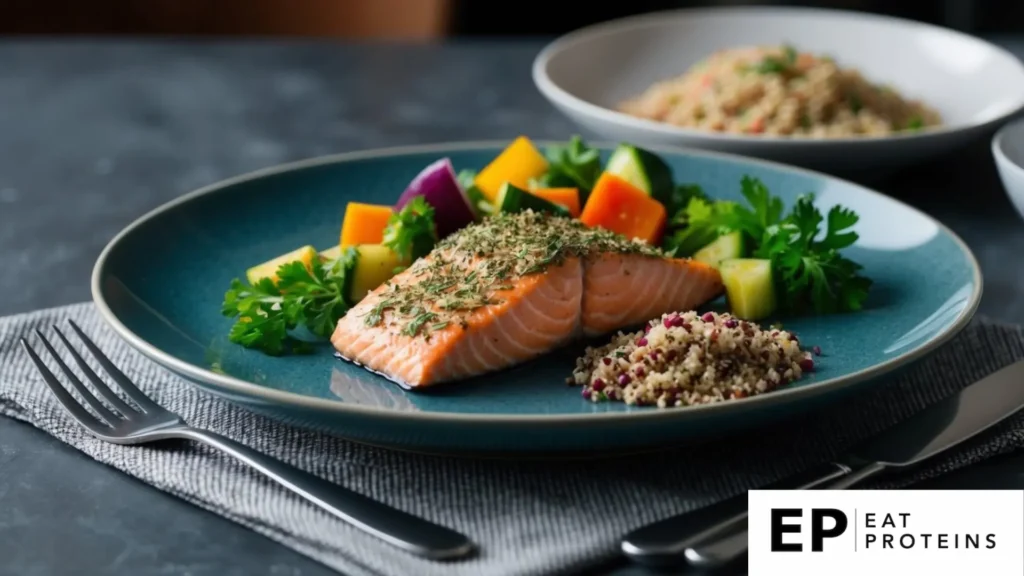
Herb-crusted salmon is a flavorful dish that works well for a renal diet. Salmon is a healthy fish that provides protein and omega-3 fatty acids, which can support heart health.
Making herb-crusted salmon is quite easy. I enjoy preparing it because it takes just a few simple steps.
- Preheat the oven to 375°F (190°C).
- Mix chopped fresh herbs, breadcrumbs, and a little lemon zest in a bowl.
- Coat a salmon fillet with the herb mixture.
- Place the fillet on a baking sheet.
- Bake for about 15-20 minutes or until the salmon flakes easily with a fork.
This dish pairs nicely with steamed vegetables or a light salad. The herbs add flavor without too much salt, making it suitable for my dietary needs. Enjoying this dish feels good, knowing it’s both tasty and health-conscious.
9. Roasted Brussels Sprouts with Balsamic Glaze
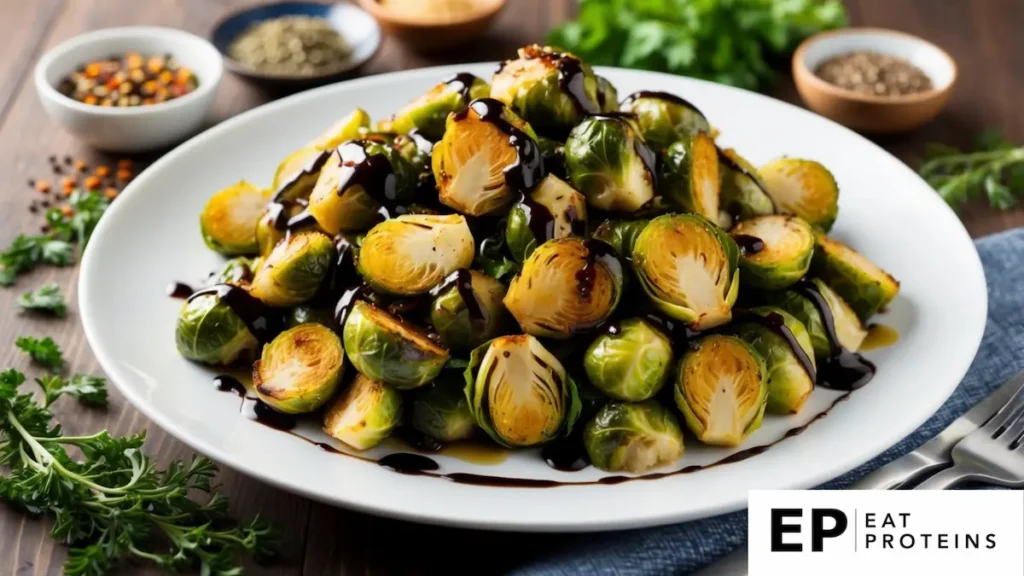
Roasted Brussels sprouts with balsamic glaze are a tasty and healthy option for those on a renal diet. Brussels sprouts are low in potassium and high in fiber, making them a great choice for kidney health.
Making this dish is easy and takes about 30 minutes. Here’s how I prepare it:
- Preheat your oven to 400°F (200°C).
- Wash and trim 1 pound of Brussels sprouts, cutting them in half.
- Toss the sprouts in 2 tablespoons of olive oil, salt, and pepper to taste.
- Spread them evenly on a baking sheet.
- Roast for 20 minutes until they are golden brown and tender.
- Drizzle 2 tablespoons of balsamic glaze over the sprouts and mix well.
- Return them to the oven for an additional 5 minutes.
This recipe is simple and allows me to enjoy a flavorful vegetable without adding too much sodium or potassium. The balsamic glaze adds a nice tangy sweetness that complements the natural flavors of the sprouts.
10. Apple Cinnamon Overnight Oats

Apple Cinnamon Overnight Oats are a tasty and nutritious option for a renal diet. This dish is simple to prepare and offers a good source of fiber and vitamins.
I find it easy to make these oats the night before. In a bowl, I combine rolled oats, almond milk, diced apples, and ground cinnamon. This gives a hearty start to the day while being kidney-friendly.
Here are the steps I follow:
- In a jar or bowl, mix 1 cup of rolled oats with 1 cup of almond milk.
- Add 1 diced apple and 1 teaspoon of ground cinnamon.
- Stir until combined, then cover the container.
- Refrigerate overnight.
In the morning, my oats are ready to enjoy. I sometimes add a few walnuts for extra crunch. It’s a delicious way to start my day while keeping my renal health in mind.
What Is the Renal Diet?
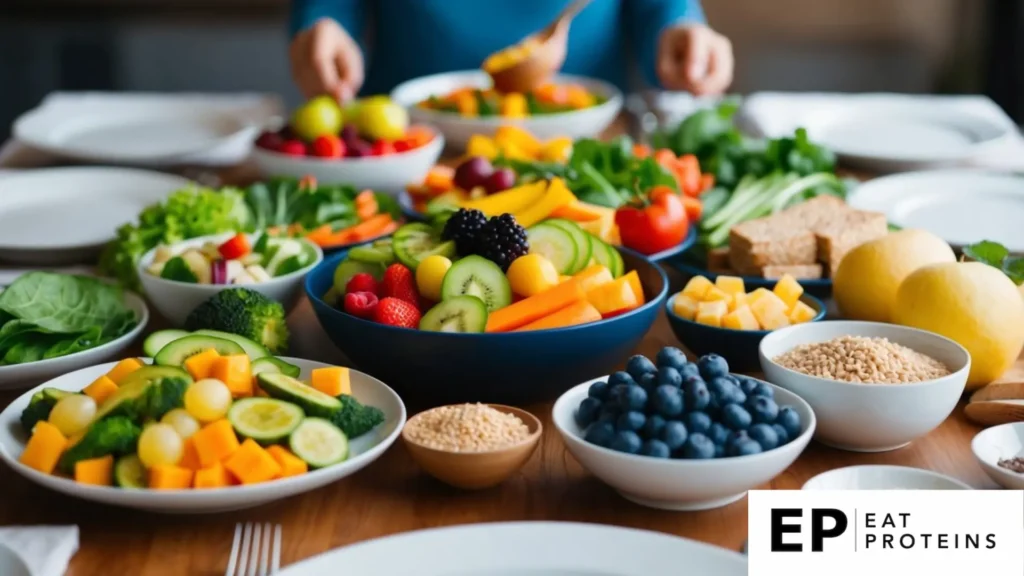
The renal diet is designed to support kidney health by managing nutrient intake. It focuses on balancing certain nutrients to help maintain kidney function and overall well-being. Here are the key aspects of this important dietary approach.
What Is the Purpose of the Renal Diet?
The primary purpose of the renal diet is to reduce the workload on the kidneys. When the kidneys are not functioning properly, they struggle to filter waste and excess fluids. The diet aims to limit substances that can cause further strain.
This includes controlling the intake of sodium, potassium, and phosphorus. By doing so, I help prevent complications such as high blood pressure, heart disease, and bone problems. Tailoring my diet to include low-protein foods can also be beneficial for those in later stages of kidney disease.
How Does the Renal Diet Support Kidney Health?
Following specific nutritional guidelines is essential for managing kidney health. First, I prioritize low-sodium foods to help control blood pressure. This includes avoiding processed foods and using fresh herbs and spices for flavoring.
Next, I focus on managing potassium levels. Foods like bananas, oranges, and potatoes are often high in potassium, so I limit these. Instead, I choose options such as apples, berries, and green beans to stay within healthy limits.
Finally, I consider phosphorus intake. High phosphorus foods include dairy products and nuts. By opting for alternatives or limiting these foods, I can help prevent bone disease and buildup of harmful substances in my body.
What Are Key Ingredients in Renal Diet Recipes?
When creating renal diet recipes, selecting the right ingredients is crucial for health. The focus should be on managing protein intake, keeping sodium low, and balancing phosphorus and potassium levels. Here are key ingredients to consider.
What Are the Protein Sources in a Renal Diet?
In a renal diet, managing protein is important. I often choose high-quality protein sources. Lean meats like chicken and turkey provide protein with less fat and phosphorus. Fish, especially fatty fish like salmon, offers good omega-3 fatty acids.
Eggs are another great option since they’re low in potassium and phosphorus. For those who prefer plant-based protein, tofu is a versatile choice. It’s low in potassium and can be used in many dishes.
Here’s a quick list of beneficial protein sources:
- Lean meats: chicken, turkey
- Fish: salmon, trout
- Eggs
- Tofu
What Are Some Low-Sodium Alternatives in the Renal Diet?
Sodium is a big concern for those on a renal diet. I look for herbs and spices to add flavor without extra salt. Some favorites include garlic, oregano, and lemon juice.
Low-sodium broth is helpful in cooking soups or grains. Using fresh ingredients instead of processed foods also reduces sodium intake.
It’s vital to read labels when shopping. Avoid items that list sodium as one of the first ingredients. Here’s what to consider:
- Use fresh herbs: basil, cilantro, parsley
- Choose low-sodium broth or stocks
- Avoid processed foods high in sodium
How Does the Renal Diet Manage Phosphorus and Potassium?
Managing phosphorus and potassium is key for kidney health. I pay attention to foods high in these minerals. For phosphorus, I limit dairy and nuts. Instead, I opt for non-dairy alternatives like almond milk or rice milk, which are lower in phosphorus.
For potassium, I choose lower-potassium vegetables like cabbage, green beans, and bell peppers. It’s also helpful to soak or boil vegetables to reduce potassium levels before cooking.
Here’s a quick guide:
- Limit dairy and nuts for phosphorus
- Opt for non-dairy milks
- Choose low-potassium vegetables: cabbage, carrots, green beans
Choosing the right ingredients can make a big difference in meal preparation for a renal diet.
